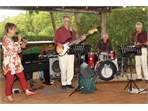Good debt, bad debt
Since the global financial crisis, debt has fallen out of favour in Australia. We’ve taken advantage of lower interest rates to pay off our debts at record rates. In March 2013, Australia’s three million home loan customers were 14% in front on their home loans, according to the Reserve Bank, giving the average home owner a buffer of around 20 month’s repayments.[1]
Yet, many Australians still have substantial borrowings, included those approaching retirement. The Reserve Bank also reports that in March 2012, one in three people aged between 55 and 64 were still paying off their home loans, while 28% had personal loans with a median balance of $13,000.[2]
So, is debt good or bad? It all depends on how you use it.
Telling the good from the bad
The wrong kind of debt can be a huge drag on your ability to build wealth, eating up spare cash you could otherwise have saved or invested. For example, $100,000 in borrowings at 6% pa could cost you around $33,000 in interest over 10 years. [3] That’s $33,000 you could have put into super or invested for your children.
The good news is that actively managing your debts can make a big difference. Simply paying an extra $100 a week on that same $100,000 loan could save you more than $12,000.[4] Even better, using your borrowings to buy an investment that returns more than your interest costs could leave you well ahead.
This is because, as most home-owners know, debt can be good. By gearing — borrowing to invest in assets like shares and property — you can build a bigger portfolio sooner, potentially earning more income and higher capital gains. The interest and borrowing costs on investment loans are generally tax deductible, making them affordable and increasing your chances of ending up in the black.
Gearing up for retirement
The last 15 years before retirement can be crucial in building up your super. According to Investment Trends, the average Australian’s super balance more than doubles between the ages of 46 and 60. Depending on your situation and the level of risk you’re comfortable with, a carefully managed borrowing strategy could potentially help you do just that.
This could be especially important now, at a time when so many of us need to recover from the damage done to our retirement savings during the financial crisis. According to researcher Investment Trends, one in five pre-retirees say they will retire later than they previously planned.[5]
Putting gearing to work
One popular strategy is to use a combination of borrowings and your own money to invest in assets that generate extra cash flow, like high yield shares. That could give you more cash to pay off non-investment (non tax deductible) debts, like your home loan, while paying interest only on your investment loan.
As a result, you may be able to pay off your personal borrowings faster, while maximising tax benefits from your investment borrowings. Then, once your personal debts are under control, you can focus on reducing your investment lending as you approach retirement.
Many people also use borrowings to buy an investment property or build up a portfolio, then sell it in the lead up to retirement and roll the proceeds into their super. Using the bring-forward rule, you can make up to three years of after-tax contributions into super at once. Right now, that means you can contribute up to $450,000 in after-tax money to your super in a single year.
Keeping risk under control
It’s also important to understand that borrowing to invest (gearing) holds risks. That’s because gearing can multiply your losses if your investments fall in value, just as it can multiply your gains if your investments rise in value. And, while borrowing to invest can bring tax benefits, everyone’s situation is different. So you need to seek appropriate financial advice before you invest.
Five ways to make debt work for you
-
Pay off your non-investment (non-tax deductible) debt first.
-
Avoid borrowing to buy depreciating assets, such as cars, which lose value over time.
-
Reduce risk by borrowing less than the maximum and by keeping a cash buffer, such as the redraw on your home loan or investment loan.
-
Diversify your investments over a variety of asset classes, companies and sectors, reducing the risk that a sudden fall in one investment could overturn your strategy.
-
Monitor your investments and be ready to change your strategy as your circumstances change, particularly as you near retirement.
[3] Based on data from the NAB loan repayments calculator.
[4] Based on data from the NAB home loan savings calculator.
These calculations are examples only. They do not take into account any product features or fees and charges. They are not specific to NAB home loans, nor do they constitute an agreement by NAB to provide credit.




